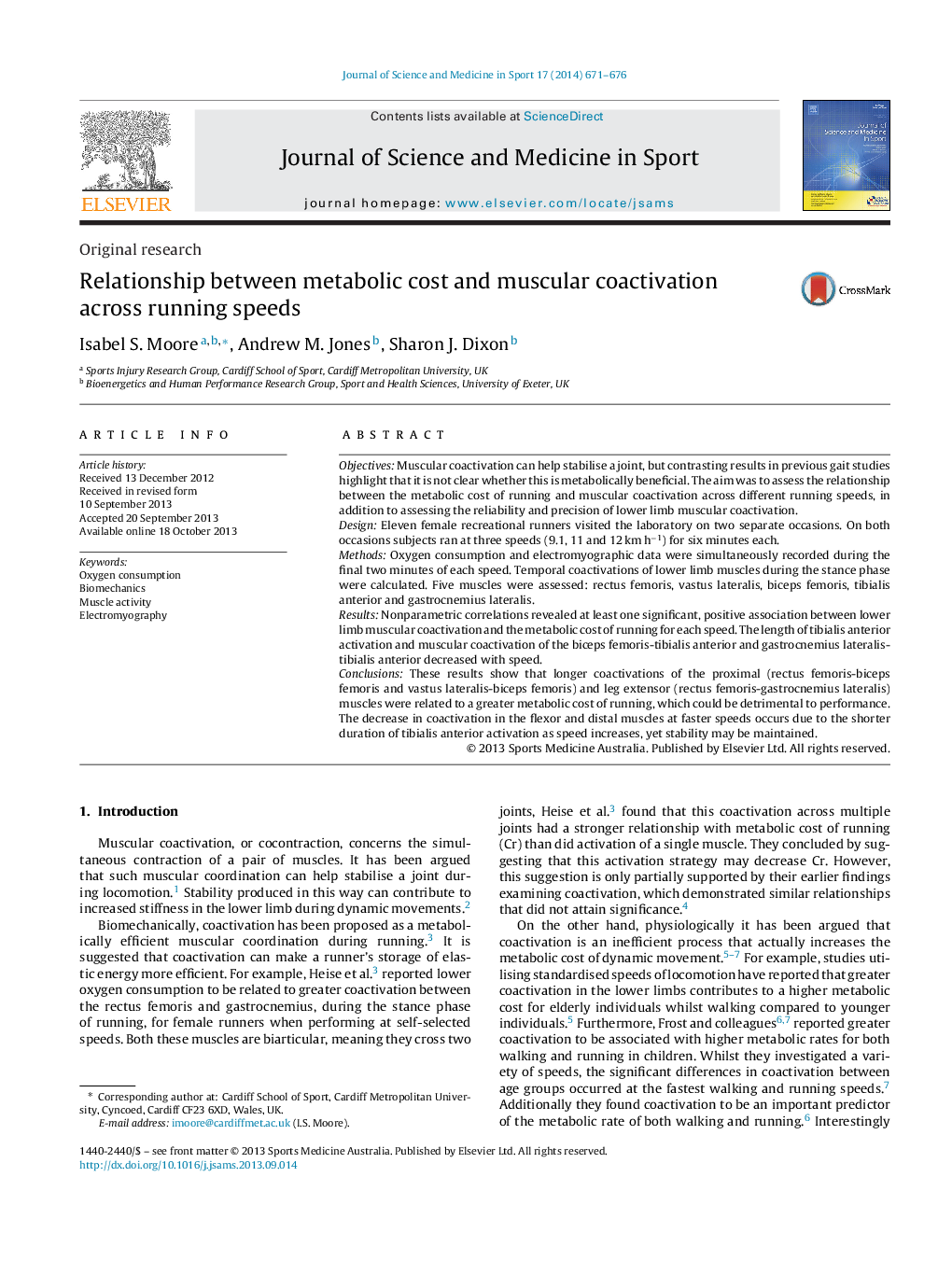| کد مقاله | کد نشریه | سال انتشار | مقاله انگلیسی | نسخه تمام متن |
|---|---|---|---|---|
| 2701425 | 1144438 | 2014 | 6 صفحه PDF | دانلود رایگان |
ObjectivesMuscular coactivation can help stabilise a joint, but contrasting results in previous gait studies highlight that it is not clear whether this is metabolically beneficial. The aim was to assess the relationship between the metabolic cost of running and muscular coactivation across different running speeds, in addition to assessing the reliability and precision of lower limb muscular coactivation.DesignEleven female recreational runners visited the laboratory on two separate occasions. On both occasions subjects ran at three speeds (9.1, 11 and 12 km h−1) for six minutes each.MethodsOxygen consumption and electromyographic data were simultaneously recorded during the final two minutes of each speed. Temporal coactivations of lower limb muscles during the stance phase were calculated. Five muscles were assessed: rectus femoris, vastus lateralis, biceps femoris, tibialis anterior and gastrocnemius lateralis.ResultsNonparametric correlations revealed at least one significant, positive association between lower limb muscular coactivation and the metabolic cost of running for each speed. The length of tibialis anterior activation and muscular coactivation of the biceps femoris-tibialis anterior and gastrocnemius lateralis-tibialis anterior decreased with speed.ConclusionsThese results show that longer coactivations of the proximal (rectus femoris-biceps femoris and vastus lateralis-biceps femoris) and leg extensor (rectus femoris-gastrocnemius lateralis) muscles were related to a greater metabolic cost of running, which could be detrimental to performance. The decrease in coactivation in the flexor and distal muscles at faster speeds occurs due to the shorter duration of tibialis anterior activation as speed increases, yet stability may be maintained.
Journal: Journal of Science and Medicine in Sport - Volume 17, Issue 6, November 2014, Pages 671–676
